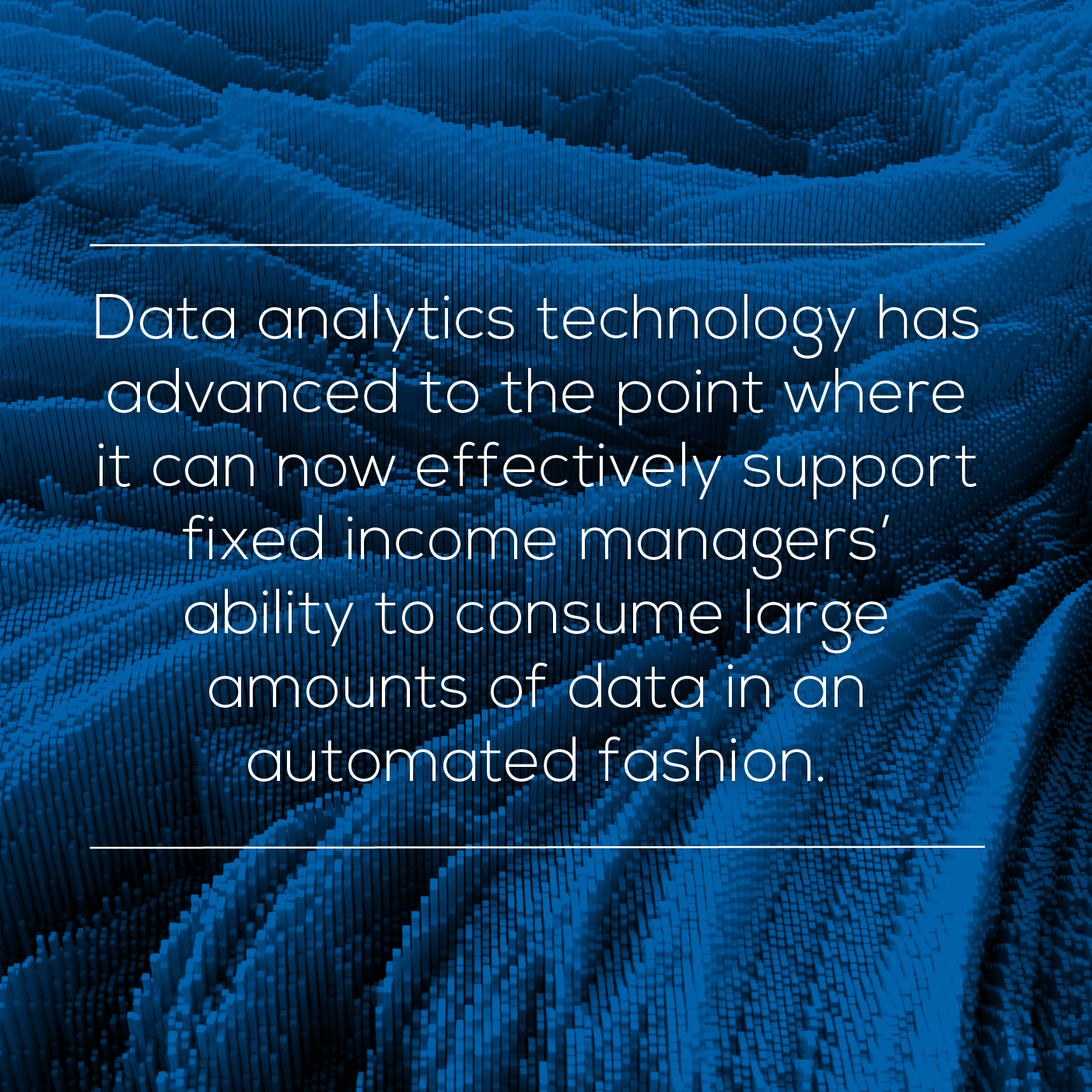It’s essentially a fact of life: a massive volume of data flows through fixed income trading desks every day. But, despite the increasing influx of data, most portfolio managers still rely on manual, outdated methods of extracting intelligence from the growing supply of information.
 Managing the volume of data
Managing the volume of data
Many firms in the financial markets sector still grapple with manual, Microsoft Excel-based spreadsheets, lagging behind their peers who use streamlined digital processes to collect, aggregate and analyze data in an efficient and, therefore, revenue-enhancing way. So much so, that as Bloomberg recently noted, data scientists for fixed income markets are becoming one of the in-demand jobs in financial services, with one trader noting that “the fixed income investment industry is far behind the curve in terms of data.”
The sheer volume and complexity of data inputs managers need is unwieldy, slow and limited in scope. The amount of market data itself continues to skyrocket – derivatives are commonplace, while many fixed income benchmarks have more than 20,000 holdings (compared to 500 in the S&P 500 index). This fact alone makes manual calculations of data points, like relative attribution, very difficult at best and nearly impossible at worst. In fact, in our surveys with clients, managing the volume of the data is routinely ranked as a top challenge.
Sadly, for fixed income managers the inefficient method of relying on manual spreadsheets has been the go-to method of tracking the growing mountain of data for years – even though manually creating complex models to measure how changing variables, like yield curves, will affect return outcomes of a subset of fixed income assets is not only labor intensive but also imperfect, prone to mistakes and costly.
A better way forward
There is indeed a better way. Data analytics technology has advanced to the point where it can now effectively support fixed income managers’ ability to consume large amounts of data in an automated fashion. This in turn gives them the ability to quickly glean the necessary intelligence in order to make the best business decisions. As Pensions & Investments Europe noted, this proliferation of trade data will allow for greater innovation in automated market making activity and liquidity provision analytics.
At StatPro, we seek to create the most useful performance, data and risk analytics solutions for our clients. So when we found that many were simply overwhelmed by managing the glut of data they deal with on a daily basis, we resolved to find a better way forward.
The Revolution platform is a cloud-based integrated performance and risk solution that helps our clients increase productivity and lower costs. With Revolution, we provide both the data and the software; that means our clients have both the raw information about these instruments as well as the sophisticated analytics to study it. With this end-to-end solution, the manager no longer needs one vendor to provide the data and a second to provide the software. The goal is a system that doesn’t dictate the approach, but one where the user does – ideally one where they
can even include their own data if they’d prefer. Finally bridging the gap between systems that come with only their own specific pre-set data, or those delivered with none at all that may take years to properly implement and calibrate.
Conclusion
Ultimately, we aim to provide a platform that gives you both efficiency and scalability. The old ways of conducting business are changing; and firms need to alter the way they deal with data or risk getting left behind.
{{cta(‘1989fbdc-61af-40c4-831e-d8322fcbf5aa’)}}